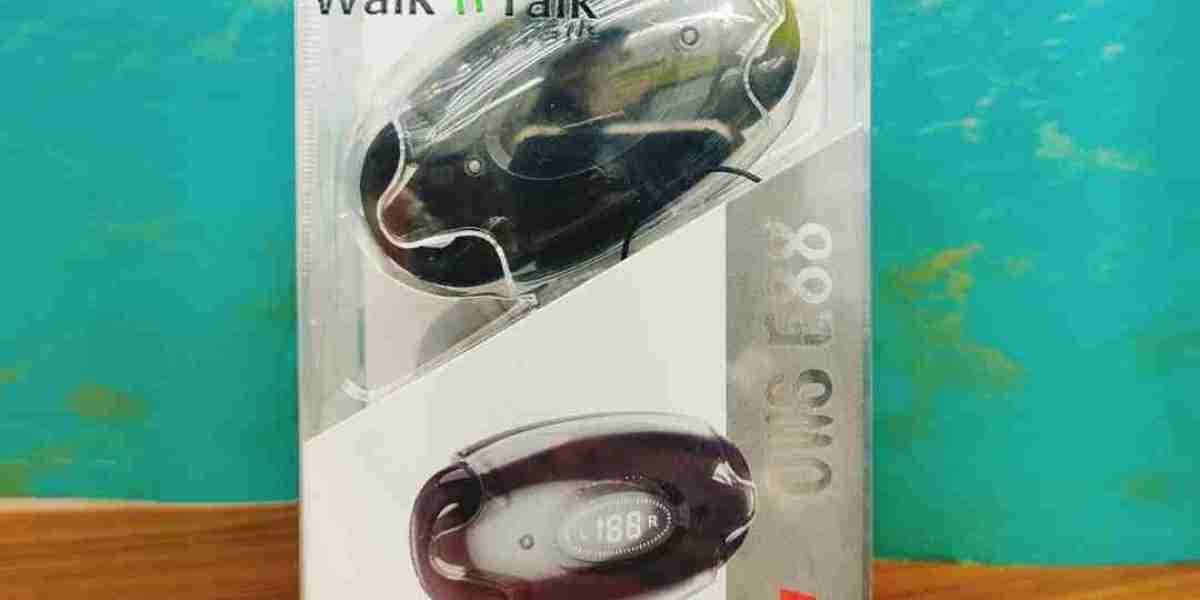In today’s interconnected world, Bluetooth technology stands out as a fundamental enabler of wireless communication. From its inception in the late 1990s to its pervasive presence in modern devices, Bluetooth has significantly transformed how we interact with technology. This article delves into the history, applications, societal impacts, and future prospects of Bluetooth technology, highlighting its vital role in our daily lives and its potential to continue driving technological innovation.
The Genesis and Evolution of Bluetooth
Bluetooth technology was conceived in 1994 by Ericsson, a Swedish telecommunications company, to create a unified standard for short-range wireless communication. Named after Harald Bluetooth Gormsson, a Viking king known for uniting Denmark and Norway, the technology was designed to unite different devices and facilitate seamless wireless communication.
The first version, Bluetooth 1.0, launched in 1999, provided basic wireless connectivity with a range of up to 10 meters and a data transfer rate of 721 kbps. Despite initial challenges like connectivity issues and limited compatibility, subsequent versions saw significant improvements. Bluetooth 2.0, introduced in 2004, featured Enhanced Data Rate (EDR) technology, which tripled the data transfer rate and enhanced user experience.
Bluetooth 3.0, released in 2009, incorporated High-Speed (HS) technology, allowing faster data transfers using an additional Wi-Fi radio. This version marked a significant leap in performance, enabling the transfer of large files and media at unprecedented speeds.
In 2010, Bluetooth 4.0 brought Bluetooth Low Energy (BLE) technology, designed for applications requiring minimal power consumption. BLE’s innovation made Bluetooth ideal for devices like fitness trackers, smartwatches, and other wearables that need long battery life.
Bluetooth 5.0, released in 2016, further enhanced the technology’s capabilities by increasing the range, speed, and broadcasting capacity. This version laid the groundwork for the Internet of Things (IoT), enabling robust and reliable connections between a growing ecosystem of smart devices.
Applications of Bluetooth Technology
Bluetooth technology’s versatility has led to its adoption across various sectors, transforming industries and enhancing daily life.
1. Audio Devices
Bluetooth has revolutionized the audio industry, making wireless headphones, earphones, and speakers ubiquitous. Users can now enjoy high-quality sound without the hassle of wires, enhancing the convenience and portability of audio devices. This has reshaped how people consume music, podcasts, and other audio content, whether at home, work, or on the go.
2. Automotive Systems
In the automotive sector, Bluetooth technology enhances both safety and convenience. Modern vehicles are equipped with Bluetooth-enabled systems that allow drivers to make hands-free calls, stream music, and access navigation features without diverting their attention from the road. This integration not only improves the driving experience but also enhances road safety by reducing distractions.
3. Wearable Devices
Wearable technology, such as fitness trackers and smartwatches, relies heavily on Bluetooth for data synchronization and communication with smartphones. These devices monitor health metrics like heart rate, steps taken, and sleep patterns, transmitting the data to companion apps for analysis. Bluetooth’s low energy consumption is crucial for the long battery life of these wearables.
4. Home Automation
Bluetooth plays a pivotal role in smart home ecosystems. Devices such as smart locks, lighting systems, thermostats, and security cameras use Bluetooth to communicate with each other and with central hubs or smartphones. This connectivity allows homeowners to control and monitor their home environments remotely, enhancing convenience and security.
5. Healthcare
In healthcare, Bluetooth technology enables innovative solutions for patient monitoring and medical device communication. Devices such as glucose monitors, blood pressure cuffs, and ECG machines use Bluetooth to transmit patient data to healthcare providers in real-time. This wireless communication facilitates remote monitoring and timely medical interventions, improving patient care and outcomes.
6. Industrial Applications
Bluetooth technology facilitates machine-to-machine communication and automation in industrial settings. Bluetooth-enabled sensors and devices monitor equipment performance, track inventory, and ensure worker safety. The ability to gather and transmit data wirelessly streamlines operations and enhances efficiency in manufacturing and logistics.
Societal Impact of Bluetooth Technology
Bluetooth technology’s widespread adoption has had significant impacts on various aspects of society, enhancing connectivity, accessibility, and economic growth.
Enhanced Connectivity
Bluetooth has fundamentally enhanced connectivity in our daily lives. The ability to wirelessly connect multiple devices, such as smartphones, tablets, laptops, and smart home gadgets, has streamlined interactions and improved user experiences. This seamless connectivity is essential in a world where staying connected is increasingly important.
Improved Accessibility
For individuals with disabilities, Bluetooth technology has significantly improved accessibility. Wireless hearing aids, for example, use Bluetooth to connect to smartphones and other audio sources, providing a more integrated and user-friendly experience. Similarly, voice-activated assistants and smart home devices enable greater independence for individuals with mobility impairments.
Economic Growth
The proliferation of Bluetooth technology has spurred economic growth by driving innovation and creating new markets. The development of Bluetooth-enabled devices has led to the growth of various industries, including consumer electronics, healthcare, and automotive. The demand for Bluetooth technology has also generated jobs and contributed to the global economy.
Environmental Impact
Bluetooth technology contributes to environmental sustainability by reducing the need for physical connectors and cables, leading to less electronic waste. Additionally, Bluetooth Low Energy (BLE) devices consume less power, contributing to energy conservation and reducing the overall carbon footprint of electronic devices.
The Future of Bluetooth Technology
As technology continues to evolve, Bluetooth is poised to play an even more significant role in shaping the future. Several emerging trends and innovations are set to enhance Bluetooth’s capabilities and expand its applications.
Bluetooth 5.1 and Beyond
Bluetooth 5.1 introduced direction-finding capabilities, allowing devices to determine the direction of a Bluetooth signal. This innovation paves the way for more precise location-based services and indoor navigation systems. Future versions of Bluetooth are expected to further improve range, speed, and power efficiency, making the technology even more versatile.
The Internet of Things (IoT)
Bluetooth technology is a cornerstone of the IoT ecosystem, enabling seamless communication between a wide array of connected devices. As IoT continues to expand, Bluetooth will play a crucial role in connecting smart homes, cities, and industries. The development of Bluetooth Mesh, which allows many-to-many device communication, will further enhance IoT applications, enabling more complex and scalable networks.
Healthcare Advancements
The healthcare sector is poised to benefit significantly from advancements in Bluetooth technology. The integration of Bluetooth in medical devices will enable more sophisticated remote monitoring and telemedicine services. Future innovations may include implantable devices and advanced wearables that provide real-time health data to healthcare providers, improving patient care and outcomes.
Enhanced Audio Experiences
The audio industry will continue to evolve with Bluetooth technology. The development of Bluetooth LE Audio, a new standard that promises improved audio quality, reduced latency, and better power efficiency, will revolutionize wireless audio experiences. This innovation will enhance applications such as hearing aids, wireless headphones, and public broadcasting systems.
Challenges and Considerations
Despite its numerous advantages, Bluetooth technology faces several challenges that need to be addressed to ensure its continued success.
Security Concerns
As with any wireless technology, Bluetooth is susceptible to security threats. Vulnerabilities such as BlueBorne and KNOB attacks have highlighted the need for robust security measures. Ensuring that Bluetooth devices have up-to-date security protocols is crucial to protecting user data and maintaining trust in the technology.
Interference and Compatibility
Bluetooth operates in the 2.4 GHz ISM band, which is shared with other wireless technologies such as Wi-Fi and Zigbee. This can lead to interference and connectivity issues. Additionally, ensuring compatibility between different versions of Bluetooth and across various devices can be challenging. Continued advancements in Bluetooth technology should focus on mitigating these issues to enhance user experience.
Power Consumption
While Bluetooth Low Energy (BLE) has significantly reduced power consumption, there is still room for improvement. Devices that require continuous connectivity, such as fitness trackers and medical monitors, need to balance performance with battery life. Future innovations should aim to further optimize power efficiency without compromising functionality.
Conclusion
Bluetooth technology has revolutionized the way we connect and communicate, transforming various aspects of our daily lives. From audio devices and automotive systems to healthcare and industrial applications, Bluetooth’s versatility and convenience have made it an indispensable part of modern technology. As we look to the future, advancements in Bluetooth technology promise to further enhance connectivity, drive innovation, and improve the quality of life for people around the world.
The continued evolution of Bluetooth, driven by emerging trends and innovations, will expand its applications and capabilities, solidifying its role as a cornerstone of wireless communication. As we embrace this technology, it is essential to address challenges such as security, interference, and power consumption to ensure that Bluetooth remains a reliable and secure solution for connecting the world wirelessly.








